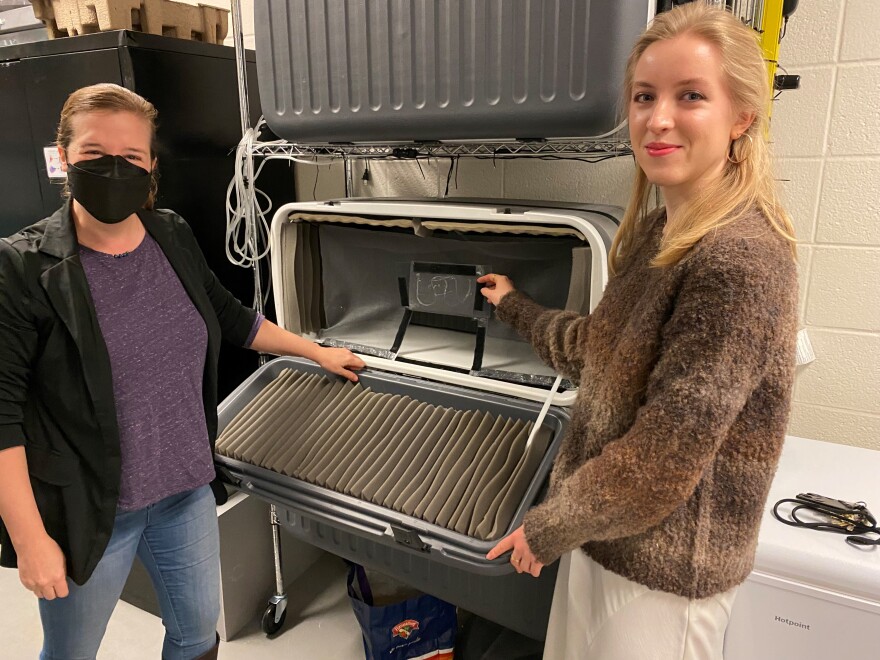If you haven’t heard the familiar bobwhite quail call recently, there’s good reason. The population — in Ohio and across the parts of the U.S. where they’re native — has plummeted. It’s down 71% in Ohio since 2011.
The decline is blamed on a couple of bad winters for the birds in the 1970s and, more recently, a loss of habitat.
University of Cincinnati researchers hope to do something about it. In separate experiments, the scientists are studying socialization and vocalization.
The recording studio
UC senior Sophia Clemen retrofitted three big coolers with soundproofing foam and a microphone. The idea is to record the bobwhite mating call to see if each of the males has a unique sound.
"If our hypothesis is right, we’ll be able to use that to hopefully partner with the Ohio State Department of Natural Resources (ODNR) on conservation projects and kind of forward the project that way," she says.
ODNR records bobwhite mating calls in the wild during the spring and summer, most recently in south central Ohio in 2022. Researchers have 1,000 hours of recordings and they’re in the process of going through them. This is important to estimate population size. The ODNR says if there are unique calls, that would make it easier.
Quality control with QR-codes
UC Assistant Professor Elizabeth Hobson decided it would be more efficient to digitally record the birds' call with QR codes. She wrote a paper about it in the journal Animal Behavior and Cognition. Laminated QR codes are attached to each bird cage for health, food, water and behavioral enrichment.

"You don’t have to be as stressed about, you know, did I forget a cage or something like that," she says. "And then if I’m stressed on the weekend, I can check and say, ‘Oh, did my student who was supposed to come in on the weekend and take care of them, did they do it already?' "
The person taking care of "the bobs," as she calls them, simply scans the code and it is entered into a database.
Can unpopular birds become popular?
UC doctoral candidate Sanjay Prasher is looking at how groups of quail build their social systems. He's building a special feeder.
"So, what I want to do is figure who’s the least popular bird in a group, and give that bird access to the feeder and see if it becomes popular over time," says Prasher. The bobwhites spend time in groups in the wild called coveys. Coveys could be important for finding food and avoiding predators.
For the experiment, he will attach RFID tags to the birds. Those tags will be detected by a reader. The feeder will be controlled by Raspberry Pi computers, or low-cost micro-computers with an RFID reader attached. He says the feeder will detect when the correct bird approaches and release food.
Out in the wild it's difficult to get data on bobwhites because Hobson says they're a popular prey animal. Everybody eats them, from cats to foxes to hawks and owls. She says they're like popcorn. There are now fewer than 3,000 living in Ohio. The bobwhite is important, not only as a game bird for other wildlife, but because it can help gauge the health of ecosystems.





